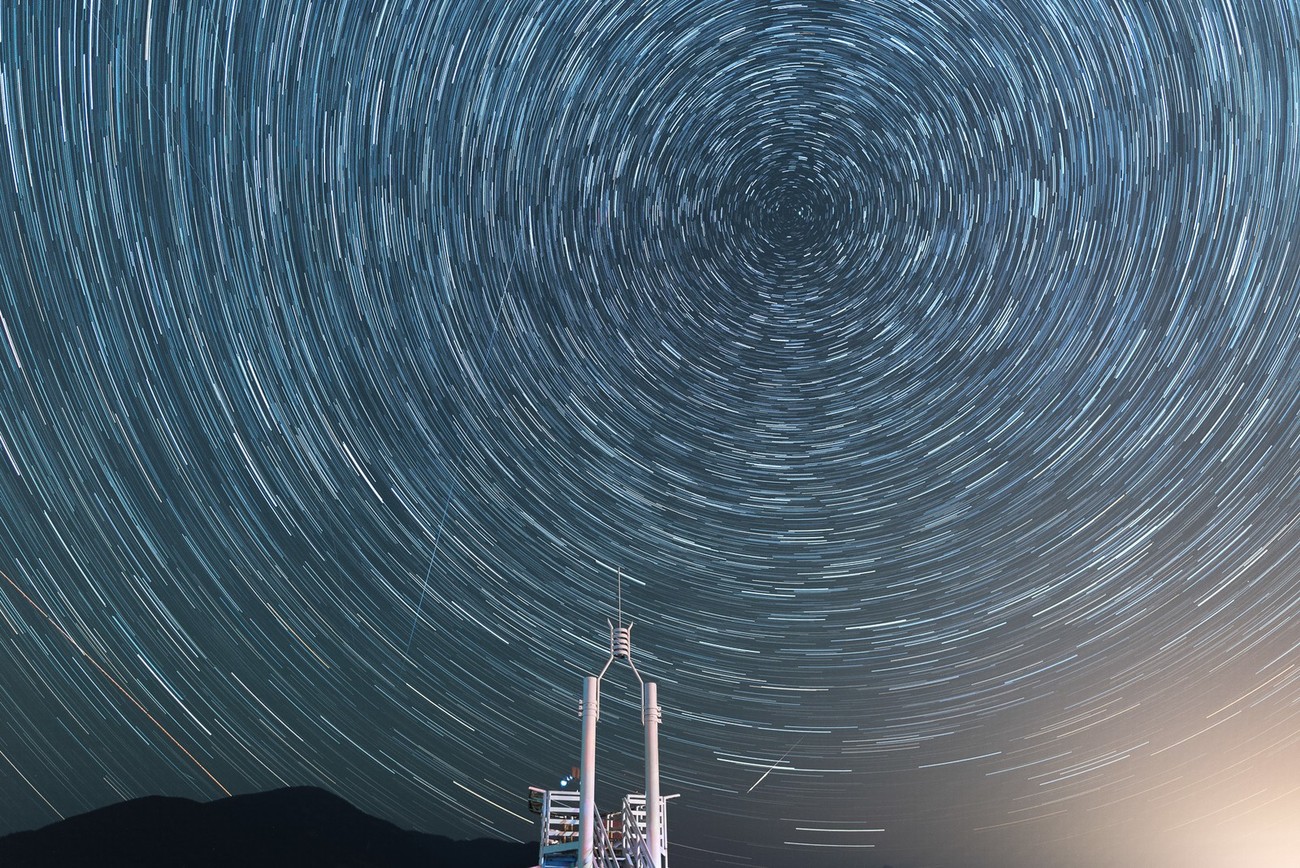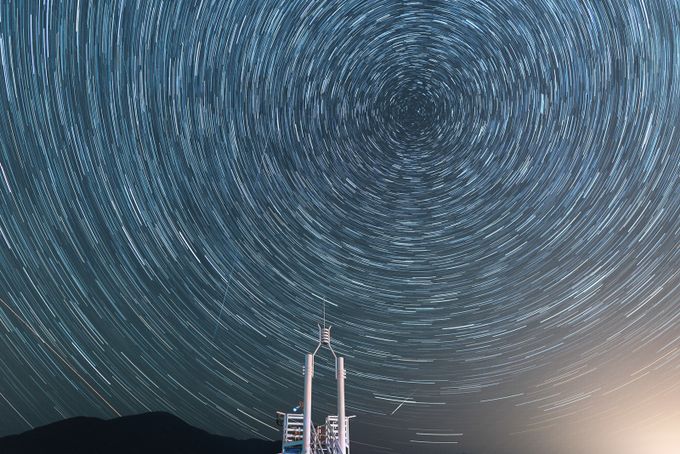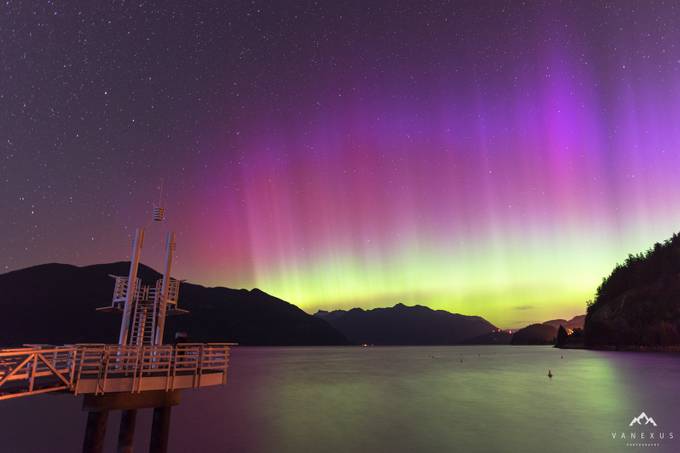Here is something we can learn from Vanexusphotography about the techniques and story behind this awarded photo.
"We are a Vancouver based couple who specialize in fine art, landscape and commercial photography. We live in one of the most naturally beautiful locations and our work is a reflection of our surrounding environment. We are passionate about photography and love the visual and technical aspects that it has to offer. What sets us apart is our passion and dedication for our craft, combined with our ten plus years of experience."
We took this photo at Porteau Cove Provincial Park, just north of Vancouver, British Columbia. Its one of our favourite spots for star gazing and catching the Northern Lights!
We had kept track of the possible meteor showers throughout the year. While meteor events do happen a few times during the year, due to our area’s tendency for cloudy and rainy days in most seasons, the Perseid meteor shower in August is one of the few events that we usually have clear nights.
We headed up to Porteau Cove at around after sunset to give our eyes some extra time to adjust to the dark, and to find interesting compositions. This provincial park has a long boat launching pier which houses unique metal platforms on either side which make for great star/astro foreground subjects.
We were hoping to do a few things: Film a time-lapse, catch some meteors and also to do a star trail.
This shot is a combination of nearly 200 photos, taken over a span of 90 minutes close to midnight on August 11th, 2015.
Combining almost 200 shots gave us plenty of natural light to work with. It also helps that the pier at Porteau Cove is usually quite busy and people’s flashlights manage to light up the foreground structures really nicely.
The bright cluster of light in the bottom right hand side of the image is actually light pollution from the city of Squamish, just north of Porteau Cove. We would have preferred less light pollution in the photo, but this is one of the closest and most accessible dark sky locations near Vancouver and we had to work with what we had.
We used a Nikon D750, a 20mm f/1.8 lens, a Manfrotto 055 Aluminium 3 Section Tripod and a basic shutter release remote. There was no need for any ND filters or external flash/lighting equipment for this photo.
Like many other photographers, we are constantly searching for photo ideas and inspiration on Instagram, Flickr or Youtube. We had seen a variety of star trail photos and while each photographer had utilized a different foreground subject, the star trails themselves remained the main focus of the image. We had also only done a few star/astro photos up to that point and wanted to try and be creative with our star shots. Having visited Porteau Cove on multiple occasions in the past, we immediately thought of the metal structures as the perfect foreground subject.
Since this was the first time we were shooting star trails, and we were also shooting a time-lapse, we decided to take the photos and stack them in post processing using a fantastic free program called StarStaX. We took 180 photos that were 30 seconds each, at 20mm with ISO 1600 and f/2.5 and did some minor adjustments in Adobe Lightroom (Highlights, shadows, contrast, exposure, etc..). We then batch synched the edits to the remaining 179 shots, exported the JPGs and loaded them into StarStax to get the final result as seen here.
We use a Nikon D750, a Nikon D800e and a Nikon D610 as our camera bodies. We also always have several Nikon lenses, including the 20mm f/1.8 lens, the 70-200mm f/4, the 50mm f/1.4, and the 24-120mm f/4-5.6.
We also have extra CF and SD cards (you never know when you’ll need more space), 5 extra batteries, and our NiSi and LEE ND holders and filters.
Our most used combination is the Nikon D750 with the 20mm lens, as it has given us our most consistently sharp and accurate results. We also use the Manfrotto 055 Aluminium 3 Section Tripod as well as the MeFoto GlobeTrotter Titanium Travel tripod. We use Arca Swiss ball-heads with both tripods and use L-brackets for all of our cameras (They really help with doing panos).
There are two methods of taking a star trail photograph: The natural method, and stacking in post-processing.
The natural method requires the photographer to leave the shutter open for a long period of time (could be anywhere from 30 minutes to a few hours). You can follow our previous description for the post-processing method of creating star trails.
The key to a successful star trail shot is to actually show the full trailing process and to portray a sense of movement in a still photo. Another challenge is to locate the North Star and to make sure that you are located in a spot with an interesting foreground subject (could be a dead tree, a mountain peak, or an interesting structure).

We find that the most difficult parts of doing star/astro photography take place before you step outside of your home. You have to plan well ahead, be aware of the amount of light pollution in your desired location, be aware of the moon cycles and how bright the sky will be, have an elementary understanding of the stars and how to locate the North Star or the Milky Way, how to be able to focus at potentially dark areas, just to name a few.
You may also need to be standing in the same spot for long periods of time so its important to come well prepared and to make sure that your camera/tripod are as still as possible. It also helps to have extra batteries and SD cards in case of accidents or emergencies.

Like everything else, practice makes perfect and the more you can experiment with astro/star photography, the more comfortable you will become with trying new techniques.
Also don’t forget your flashlights, headlamps and a lens cloth!





